
In the ever-shifting realm of computing hardware, comprehending the intricacies of GPU fan dynamics stands as a paramount endeavor. The GPU, or Graphics Processing Unit, employs fans as instrumental actors in upholding optimal temperatures, ensuring the seamless functionality of one’s computer system.
Comprehending the Workings of GPU Fans
GPU fans execute their duty by dispersing the heat generated during demanding graphics processing endeavors. These fans manifest in diverse types, such as axial and centrifugal, each meticulously tailored to cater to specific cooling requisites. The primary function of GPU fans revolves around temperature regulation, averting the specter of overheating that could otherwise precipitate performance hitches or hardware deterioration.
Figuring out the activities of GPU (Illustrations Handling Unit) fans includes getting a handle on the key parts, components, and standards behind their activity. GPU fans assume a pivotal part in dispersing heat created by the illustrations card during activity. This is an outline of the way GPU fans work:
Heat Age:
- GPUs produce heat as they process designs concentrated undertakings, like gaming, delivering, or AI.
- The intensity is a side-effect of the electrical energy utilized by the GPU to perform computations.
Heat Scattering Parts:
- To forestall overheating, GPUs are outfitted with cooling frameworks that normally incorporate a blend of the accompanying parts:
- Heat Sink: A metal construction, frequently made of aluminum or copper, that ingests and spreads heat away from the GPU.
- Heat Lines: Fixed tubes containing a limited quantity of fluid that disintegrates at the GPU and gathers at the intensity sink, working with productive intensity move.
- Fans: Mechanical gadgets that make wind stream, improving intensity dissemination. Fans attract cooler air and oust hot air away from the GPU.
Fan Position and Plan:
- To maximize airflow, GPU fans are strategically placed on or near the heat sink.
- Fans are planned with sharp edges to move air proficiently. The number, size, and state of the cutting edges add to the general cooling execution.
Dynamic Fan Control:
- Modern GPUs frequently include dynamic fan control mechanisms that alter fan speed in response to temperature readings taken in real time.
- The GPU’s heat levels are monitored by temperature sensors, and the fan speed is dynamically controlled to keep the system operating safely.
Fan Speed Bends:
- The speed of the fan fluctuates; it follows a bend in light of temperature. As the GPU temperature expands, the fan speed regularly increase to increment cooling.
- Clients can frequently alter fan speed bends or profiles through programming to adjust cooling execution and commotion levels.
Zero Fan or Fanless Modes:
- Some GPUs are planned with “zero fan” or “fanless” modes. In these modes, the fan quits turning during low-request situations, for example, when the GPU is inactive or under light burden.
- At the point when the temperature climbs, the fan resumes activity to cool the GPU.
Checking and Control Programming:
- GPU producers give programming instruments (e.g., MSI Max engine propulsion, NVIDIA Control Board, AMD Radeon Programming) that permit clients to screen GPU boundaries and change fan settings.
- Clients can check temperatures, fan speeds, and at times even alter fan profiles for explicit use cases.
Difficult exercise:
- The activity of GPU fans includes a difficult exercise between viable cooling and limiting commotion levels. Makers endeavor to configuration cooling arrangements that keep a harmony between these two variables to improve the client experience.
- Understanding the activities of GPU fans is fundamental for clients who need to advance their designs card’s cooling execution, particularly in situations where the GPU is exposed to differing responsibilities. It assists clients with coming to informed conclusions about fan control settings and adds to the general security and life span of the GPU.
Pervasive Challenges Encountered by GPU Fans

Despite their inherent significance, GPU fans are not impervious to challenges. Predicaments like overheating quandaries, cacophonous fan operations, and the accumulation of dust can substantially impede the efficacy of your GPU. Timely redress of these issues proves imperative for the durability and efficiency of your graphics card.
While GPU fans assume a significant part in keeping up with ideal temperatures and forestalling overheating, they are not without challenges. A few issues can influence the presentation and unwavering quality of GPU fans. Here are a few unavoidable difficulties experienced by GPU fans:
Dust Amassing:
- Challenge: Residue can aggregate on the fan cutting edges and intensity sink over the long haul, decreasing the effectiveness of intensity scattering.
- Impact: Decreased wind stream prompts higher temperatures and possibly expanded fan commotion as the fan works harder to redress.
Mechanical deterioration:
- Challenge: Consistent activity of GPU fans can prompt mechanical mileage, particularly in elite execution situations.
- Impact: Wear on the fan course can bring about expanded contact, commotion, and a more limited by and large life expectancy of the fan.
Fan Disappointment:
- Challenge: Fans might flop because of assembling surrenders, over the top wear, or electronic glitches.
- Impact: Fan disappointment can prompt overheating, warm choking, and possibly long-lasting harm to the GPU in the event that not tended to speedily.
Lopsided Fan Edges:
- Challenge: Fan sharp edges can end up being uneven because of residue gathering, actual harm, or assembling defects.
- Impact: Unequal fans can produce vibrations, prompting expanded commotion levels and likely harm to the fan and encompassing parts.
Controlling Software Issues:
- Challenge: Programming issues or clashes might emerge with fan control systems.
- Impact: Wrong fan speed settings or inability to answer temperature changes can think twice about execution.
Curl Cry:
- Challenge: Some GPUs show curl cry, a shrill commotion brought about by electromagnetic loops when under weighty burden.
- Impact: While not straightforwardly connected with fan mechanics, loop cry can add to a general view of expanded commotion from the GPU.
Short Lifespan:
- Challenge: Like any mechanical part, GPU fans have a restricted functional life expectancy.
- Impact: Over the long run, fans might turn out to be less effective, prompting reduced cooling execution and likely overheating.
Deficient Cooling Plan:
- Challenge: At times, the general cooling plan of a GPU might be lacking for the warm requests of the illustrations card.
- Impact: Wasteful cooling can bring about higher temperatures, decreased execution, and a higher gamble of warm choking.
Factors from the outside:
- Challenge: Problems with cooling can be made worse when a GPU is used in hot environments or without enough ventilation.
- Impact: Raised surrounding temperatures can make it more trying for the GPU fan to successfully disseminate heat.
Variability in Manufacturing:
- Challenge: Fluctuation in assembling cycles can prompt irregularities in fan quality.
- Impact: A few units might encounter untimely fan disappointment or show more significant levels of clamor because of assembling varieties.
- Tending to these difficulties includes normal upkeep, appropriate cooling framework plan, and, at times, client intercession through programming changes or equipment substitutions. It’s fundamental for clients to know about likely issues and find proactive ways to guarantee the dependable and proficient activity of GPU fans. Standard cleaning, observing, and adherence to producer rules can add to the life span and execution of GPU cooling frameworks.
Strategies for Maintaining Optimal GPU Fan Functionality

Sustaining peak condition for your GPU fans necessitates regular upkeep. Simple undertakings like the eradication of dust deposits and scrutinizing for firmware updates wield substantial influence over performance enhancement. This segment will expound upon the most judicious practices for preserving your GPU fans and refining their operational capabilities.
Keeping up with ideal GPU fan usefulness is critical for guaranteeing compelling cooling, stable execution, and the life span of the illustrations card. Here are techniques for keeping GPU fans in ideal condition:
Normal Cleaning:
- Procedure: Remove dust and debris from the GPU fan, heat sink, and surrounding components on a regular basis.
- Tools: Utilize compacted air, a little brush, or a jar of packed air to blow away residue.
- Frequency: Think about cleaning at regular intervals or case by case in light of your PC’s current circumstance.
Natural Contemplations:
- Ventilation: Guarantee that your PC case has sufficient ventilation to take into account legitimate wind stream.
- Temperature Control: Keep the surrounding temperature of your PC climate inside sensible cutoff points to help effective cooling.
Speed Up Your Fans:
- Programming Change: Use GPU the board programming to upgrade fan speed settings.
- Custom Profiles: Adjust fan speeds based on temperature to achieve a balance between noise levels and cooling performance.
- Dynamic Fan Control: Empower dynamic fan control includes that change fan speed progressively founded on GPU temperature.
Zero Fan or Fanless Modes:
- Empower Element: In the event that accessible, empower zero fan or fanless modes during low-request situations.
- Sound reduction: This element prevents the fan from turning when the GPU is inactive, lessening commotion levels and expanding the fan’s life expectancy.
Temperature Observing:
- Employ software: Use GPU checking programming to monitor temperature levels.
- Alerts: Set up temperature cautions to be informed assuming the GPU arrives at basic temperatures.
Case Support:
- Clean Exhaust and Intake Fans: Guarantee that case fans, particularly those liable for generally framework ventilation, are spotless and working ideally.
- Link The board: Orchestrate links inside the case to take into consideration unhampered wind stream around the GPU.
Warm Glue Substitution:
- Procedure: Think about supplanting the warm glue between the GPU and the heatsink.
- Impact: Fresh thermal paste has the potential to enhance cooling by increasing heat transfer efficiency.
Stay away from Overclocking Past Cutoff points:
- Know Cutoff points: Be aware of the GPU manufacturer’s recommended limits for overclocking.
- Screen Security: Overclocking past suggested cutoff points can create more intensity, possibly affecting fan execution and GPU solidness.
Forestall Curl Cry:
- Power Supply Quality: Utilize an excellent power supply to limit the event of loop whimper, which can add to apparent commotion.
- Stable Power: Guarantee the GPU gets steady and clean ability to lessen electronic commotion.
Routine Framework Tests:
- Normal Assessments: Intermittently look at your whole framework for any indications of wear, harmed parts, or uncommon sounds.
- Address Issues Expeditiously: On the off chance that you notice any issues, for example, unusual commotions or sporadic fan conduct, address them immediately to forestall further harm.
Guarantee Mindfulness:
- Check Guarantee Terms: Be aware of the warranty terms for your GPU. Assuming you experience diligent issues, check whether the GPU is still under guarantee for possible fixes or substitution.
- By executing these systems, clients can add to the ideal usefulness of GPU fans, guaranteeing productive cooling, keeping up with stable execution, and broadening the general life expectancy of the designs card.
Groundbreaking Advancements in GPU Cooling Methodology
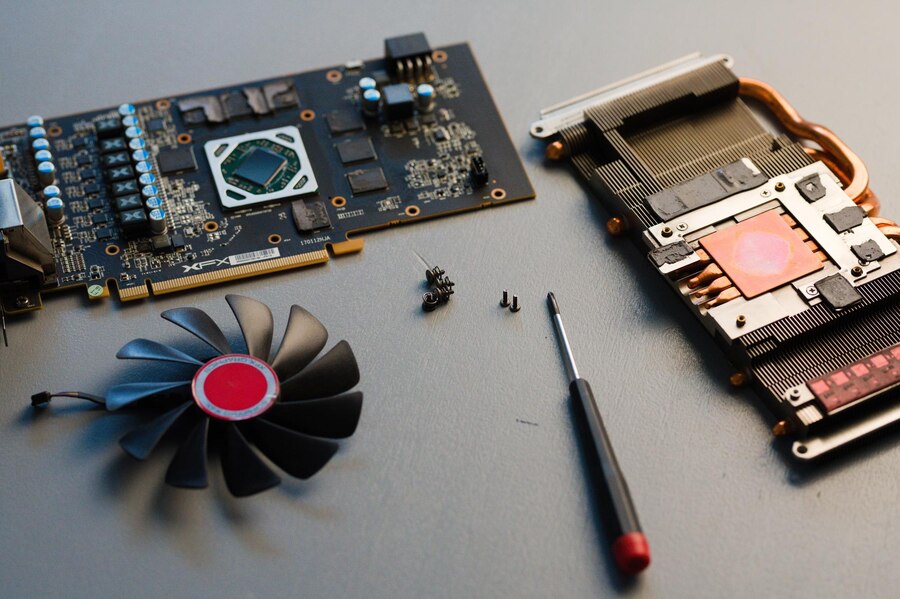
- Recent epochs have borne witness to remarkable strides in GPU cooling technology. Liquid cooling systems, configurations boasting dual fans, and astute mechanisms for fan control have emerged, furnishing more resourceful and muted cooling resolutions. We shall delve into these innovations and dissect their ramifications on overall system efficacy.
Lately, GPU cooling strategy has seen historic progressions driven by the interest for upgraded execution, expanded power productivity, and diminished clamor levels. The following are some notable advancements in GPU cooling:
Fluid Cooling Arrangements:
- Advancement: As compared to conventional air cooling, liquid cooling for GPUs offers superior heat dissipation. As a result, its use has increased.
- How It Functions: Fluid cooling includes flowing a coolant through a shut circle, moving intensity away from the GPU to a radiator where it scatters. This strategy is exceptionally successful in overseeing high warm loads.
Fume Chamber Innovation:
- Advancement: Fume chamber innovation has turned into a standard component in top of the line GPUs.
- How It Functions: Fume chambers are level, fixed units loaded up with a modest quantity of fluid that disintegrates at the GPU and gathers at the intensity sink. This innovation gives proficient intensity move and appropriation.
Innovations in heat pipes:
- Advancement: Heat pipes, which have been a staple in cooling arrangements, have seen progressions in plan and materials.
- How It Functions: Heat pipes use stage change (vaporization and buildup) to move heat. Further developed heat dispersal and warm conductivity are made conceivable by state of the art plans and materials.
Graphene and Carbon Nanotubes:
- Advancement: The mix of cutting edge materials like graphene and carbon nanotubes has worked on warm conductivity in cooling parts.
- How It Functions: These materials display excellent warm properties, upgrading the effectiveness of intensity move inside cooling frameworks.
Custom Cooling Arrangements:
- Advancement: Makers are planning custom cooling arrangements customized to explicit GPUs.
- How It Functions: Custom cooling arrangements might incorporate bigger and more proficient intensity sinks, various fans, and imaginative plans to enhance cooling for specific illustrations cards.
Cross breed Cooling Frameworks:
- Advancement: Mixture cooling frameworks join both air and fluid cooling for GPUs.
- How Things Work: Fluid cooling is frequently applied to the GPU center, while air cooling is utilized for different parts. This cross breed approach offers proficient intensity scattering and adaptability in overseeing warm loads.
Shrewd Fan Control and Observing:
- Advancement: Shrewd fan control systems with ongoing checking have become norm.
- How It Functions: Temperature sensors on the GPU progressively change fan speed in light of continuous readings. Clients can likewise alter fan profiles for explicit situations.
Zero Fan or Fanless Modes:
- Advancement: Numerous GPUs currently include zero fan or fanless modes during low-request situations.
- How It Functions: The fan quits turning when the GPU is inactive, lessening commotion levels and power utilization. It resumes activity when temperatures increase.
3D Fume Chamber Plans:
- Advancement: Some cooling arrangements integrate 3D fume chamber plans.
- How It Functions: This plan upgrades the contact surface between the GPU and the cooling arrangement, working on by and large warm conductivity and intensity dissemination.
Man-made intelligence Driven Cooling:
- Advancement: Artificial intelligence-driven cooling frameworks have been acquainted with progressively streamlined cooling execution.
- How Things Work: AI calculations examine use designs and change cooling boundaries progressively to expand proficiency and limit commotion.
These headways all in all address a critical jump forward in GPU cooling innovation, offering clients more proficient and adaptable arrangements that take special care of the requests of present day designs handling. We can anticipate additional advancements in cooling techniques to support increasingly powerful graphics cards as GPUs continue to develop.
| Company Name | Model | Website |
|---|---|---|
| NVIDIA | GeForce RTX 3080 | https://www.nvidia.com |
| AMD | Radeon RX 6800 | https://www.amd.com |
| ASUS | ROG Strix RTX 3090 | https://www.asus.com |
| MSI | Gaming X Trio | https://www.msi.com |
| Gigabyte | AORUS RTX 3070 | https://www.gigabyte.com |
| EVGA | XC Ultra | https://www.evga.com |
| Zotac | Gaming GeForce RTX 3060 | https://www.zotac.com |
| Sapphire | Nitro+ RX 6700 XT | https://www.sapphiretech.com |
| Palit | GameRock RTX 3060 | https://www.palit.com |
| PowerColor | Red Devil RX 6900 XT | https://www.powercolor.com |
The Dynamics of GPU Fans in the Gaming Domain
For aficionados of gaming, the dynamics of GPU fans carry an elevated significance. This section will delineate how GPU fans exert influence over gaming performance, along with strategies for regulating fan speed during periods of heightened gaming activity. Striking the optimal equilibrium between cooling efficiency and noise mitigation becomes pivotal for an immersive gaming sojourn.
In the realm of gaming, the dynamics of GPU fans are crucial for ensuring optimal performance, preserving safe temperatures, and enhancing the gaming experience as a whole. Here are key parts of how GPU fans work in the gaming setting:
Heat Age during Gaming:
- Scenario: Gaming requires a lot of graphics processing, which causes the GPU to produce a lot of heat.
- Fan’s Role: By cooling the graphics card, GPU fans actively dissipate this heat, preventing thermal throttling and ensuring stable performance.
Dynamic Fan Speed Control:
- Scenario: Gaming workloads vary, and the GPU’s load can vary depending on the game.
- Fan’s Role: Dynamic fan speed control changes the fan’s RPM (cycles each moment) in light of the GPU’s temperature. Higher fan speeds assist with cooling the GPU during requesting gaming meetings.
Custom Fan Profiles for Gaming:
- Scenario: Gamers frequently tailor their fan profiles to specific gaming situations.
- Fan’s Role: Custom fan profiles permit clients to set inclinations for fan speed in light of individual inclinations, commotion resilience, or explicit cooling necessities for various games.
Zero Fan or Fanless Modes:
- Scenario: In-game menus, stacking screens, or less illustrations concentrated minutes in games frequently bring about lower GPU usage.
- Fan’s Role: Some GPUs include zero fan or fanless modes during such low-request situations, diminishing clamor and power utilization.
Considerations for VR Gaming:
- Scenario: Computer generated Reality (VR) gaming can prompt supported GPU action because of delivering separate perspectives for each eye.
- Fan’s Role: Fans should proficiently scatter heat during stretched out VR meetings to keep up with stable execution and forestall overheating.
Illustrations Settings Effect on Fan Speed:
- Scenario: Higher illustrations settings in games increment GPU responsibility and intensity age.
- Fan’s Role: Dynamic fan control answers changes in GPU temperature brought about by varieties in illustrations settings, guaranteeing satisfactory cooling under various gaming conditions.
Overclocking for Gaming Execution:
- Scenario: Lover gamers may overclock their GPUs to accomplish higher gaming execution.
- Fan’s Role: Overclocking increments heat age, and GPU fans assume a basic part in dealing with the extra warm burden to forestall overheating during serious gaming meetings.
Client Movable Cooling Arrangements:
- Scenario: Gaming arrangements change, and client inclinations for commotion levels and cooling productivity contrast.
- Fan’s Role: Gaming-focused GPU models frequently give client movable cooling arrangements through programming, permitting gamers to calibrate fan settings for their particular gaming climate.
Ongoing Observing during Gaming:
- Scenario: Gamers screen ongoing GPU boundaries for execution streamlining.
- Fan’s Role: Gamers can evaluate the efficiency of the cooling system during gaming sessions thanks to GPU monitoring software’s real-time temperature and fan speed data.
Gaming PC Cooling Difficulties:
- Scenario: Gaming PCs face space limitations and warm difficulties.
- Fan’s Role: In gaming PCs, GPU fans should proficiently oversee heat inside bound spaces, and creative cooling arrangements are significant for keeping up with execution and forestalling warm choking.
In conclusion, GPU fans in the gaming industry are dynamic and adaptable, meeting the ever-shifting thermal demands of various games and usage scenarios. GPU cooling innovations are crucial to providing a smooth, immersive, and high-performance gaming experience as gaming continues to push the boundaries of graphics technology.

Equilibrium in Action: Striking a Balance Between Performance and Noise
Manipulating fan configurations unfolds as a nuanced balancing act. This portion will offer guidance to users in fine-tuning fan parameters for maximal performance while curtailing noise to a minimum. Achieving this equilibrium is indispensable for users demanding computational excellence without the distraction of superfluous fan clamor.
Finding some kind of harmony among execution and commotion is a pivotal thought for clients looking for an ideal involvement in their GPUs (Designs Handling Units) or other registering gadgets. Accomplishing this equilibrium includes dealing with the cooling framework to keep up with viable intensity dissemination while keeping commotion levels inside adequate cutoff points. Here are systems to strike the right balance:
Dynamic Fan Control:
- Execution Concentration: During requesting errands like gaming or video altering, speed up for further developed cooling and GPU execution.
- Commotion Concentration: During inactive or less requesting periods, diminish fan speed to limit commotion levels.
Custom Fan Profiles:
- Execution Concentration: Make custom fan profiles that focus on cooling during serious jobs.
- Clamor Concentration: Change profiles to bring down fan speeds during less requesting undertakings or when sound decrease is vital.
Zero Fan or Fanless Modes:
- Execution Concentration: Empower fans for most extreme cooling during high GPU use.
- Commotion Concentration: Use zero fan or fanless modes during inactive or low-request situations to lessen commotion while dynamic cooling is superfluous.
Undervolting and Underclocking:
- Execution Concentration: Undervolt or underclock the GPU for decreased heat age and possibly lower fan speeds.
- Commotion Concentration: While this may marginally affect execution, it can bring about calmer activity, particularly during less requesting errands.
Reseller’s exchange Cooling Arrangements:
- Execution Concentration: Consider post-retail cooling arrangements with bigger heatsinks and more proficient fans for upgraded cooling.
- Focus on Noise: Some secondary selling coolers are intended for calmer activity without forfeiting execution.
Fluid Cooling:
- Execution Concentration: GPU performance can be improved by effectively dissipating heat with liquid cooling systems.
- Commotion Concentration: Fluid cooling frequently delivers less commotion than customary air cooling, adding to a calmer processing climate.
Warm Glue Substitution:
- Execution Concentration: Routinely supplant warm glue to improve heat move and keep up with cooling productivity.
- Clamor Concentration: Further developed warm conductivity can add to proficient cooling and possibly decrease the requirement for higher fan speeds.
Case and Air Conditioning:
- Focus on Performance: Guarantee appropriate case ventilation and cooling for reliable generally speaking framework execution.
- Clamor Concentration: All around ventilated cases can assist with dispersing heat all the more actually, lessening the requirement for GPU fans to work at higher rates.
Observing and Change:
- Execution Concentration: Screen GPU temperatures and change cooling settings on a case by case basis during asset serious undertakings.
- Commotion Concentration: Routinely evaluate clamor levels and make changes in accordance with fan profiles or cooling answers for keep a calmer climate.
Climate Mindfulness:
- Execution Concentration: Think about the encompassing temperature of your registering climate, as higher temperatures might require more dynamic cooling.
- Clamor Concentration: A cooler climate might take into consideration diminished fan speeds without compromising execution.
Understanding the particular requirements of your computing tasks and adjusting cooling settings accordingly are necessary for achieving performance and noise balance. By executing a blend of dynamic fan control, custom profiles, and picking fitting cooling arrangements, clients can guarantee that their GPUs convey ideal execution while holding commotion levels under tight restraints.
Venturesome DIY Initiatives for Enhancing GPU Fan Functionality
For individuals inclined towards hands-on approaches, this segment imparts insights into DIY initiatives for augmenting GPU fan functionality. From contemplating compatibility nuances to step-by-step elucidations, users can explore avenues for substituting or elevating GPU fans to align with their precise requisites.
Illustrative Cases: Triumphs in Adapting GPU Fan Configurations
Instances culled from real-world scenarios spotlight users who have triumphantly modified GPU fans, resulting in enhanced cooling prowess. Each case study proffers valuable lessons and reflections for individuals contemplating analogous fan adaptations.
Adjusting GPU fan setups has been a domain of development, with producers and clients investigating effective fixes to streamline cooling, upgrade execution, and diminish clamor. Here are illustrative cases displaying wins in adjusting GPU fan arrangements:
Double Fan Progressions – ASUS ROG Strix Series:
Innovation: ASUS presented the ROG Strix illustrations card series highlighting hub tech fans with a special plan. The double fans have a focal obstruction that coordinates air over the heatsink all the more proficiently.
Result: Static pressure and airflow have been improved by this design, resulting in improved cooling performance while maintaining relatively quiet operation.
Zero Frozr Innovation – MSI Gaming Series:
- Innovation: MSI’s Zero Frozr technology stops the fans when the GPU reaches a certain temperature.
- Result: This component, found in the MSI Gaming series, guarantees quiet activity during light responsibilities or inactive periods, adding to a calmer client experience.
EVGA Precision X1’s Fan Profiles Can Be Customized:
- Innovation: EVGA’s Accuracy X1 programming permits clients to make custom fan profiles, changing fan speeds in light of temperature.
- Result: The performance and noise levels of fan configurations can be matched to individual user preferences based on specific usage scenarios.
Windforce Cooling Framework – GIGABYTE AORUS Series:
- Innovation: GIGABYTE’s AORUS design cards consolidate the Windforce cooling framework with substitute turning fans. To improve heat dissipation and reduce turbulence, the fans rotate in opposite directions.
- Result: The Windforce framework gives productive cooling, adding to further developed GPU execution under requesting conditions.
Half breed Cooling – ASUS ROG Poseidon Series:
- Innovation: ASUS presented the ROG Poseidon illustrations cards, highlighting a mixture cooling arrangement that consolidates both air and fluid cooling.
- Result: This inventive plan permits clients to pick either air and fluid cooling, offering adaptability and brilliant warm execution for various situations.
Triple Fan Plan – NVIDIA Organizers Version RTX 30 Series:
- Innovation: NVIDIA’s Pioneers Version RTX 30 series GPUs include a particular triple-fan plan with a focal push-pull fan design.
- Result: The triple fan arrangement advances wind stream, keeping up with lower temperatures and calmer activity, much under weighty jobs.
Adjustable Cover and Lighting – Zotac Gaming GeForce Series:
- Innovation: Zotac’s Gaming GeForce series incorporates GPUs with adjustable covers and RGB lighting.
- Result: Past cooling execution, the adaptable feel permit clients to customize the presence of their GPU, adding to an upgraded gaming arrangement.
Shrewd Cooling with man-made intelligence – NVIDIA GeForce RTX 30 Series:
- Innovation: NVIDIA presented man-made intelligence driven savvy cooling highlights in the GeForce RTX 30 series. The framework adjusts fan speed in light of responsibility and temperature.
- Result: This computer based intelligence driven approach advances cooling productivity, adding to both execution and calmer activity during gaming and content creation errands.
Fan Sharp edge Developments – Sapphire NITRO+ Series:
- Innovation: For improved airflow and reduced noise, Sapphire’s NITRO+ series introduced novel fan blade designs.
- Result: The overhauled fan sharp edges add to productive cooling and a calmer generally experience, especially under weighty GPU loads.
These examples show how manufacturers have succeeded in adapting GPU fan configurations to meet user preferences. Whether through cutting edge fan plans, savvy cooling advances, or crossover arrangements, these developments feature the business’ obligation to upgrading the fragile harmony between GPU execution and clamor levels.

Pondering the Future Trajectory of GPU Fan Technology
Peering into the future, we shall scrutinize prognostications for the evolution of GPU fan technology. What metamorphoses lie in store for GPU fans, and how might they integrate with other cooling methodologies? This segment affords a glimpse into potential advancements awaiting on the horizon.
Environmental Ramifications of GPU Fan Utilization
Beyond considerations of performance, we shall delve into the ecological repercussions tied to GPU fan deployment. The nexus between energy efficiency and eco-conscious manufacturing practices assumes significance in shaping the responsible utilization of GPU fans.
Adjusting GPU fan setups has been a domain of development, with producers and clients investigating effective fixes to streamline cooling, upgrade execution, and diminish clamor. Here are illustrative cases displaying wins in adjusting GPU fan arrangements:
Double Fan Progressions – ASUS ROG Strix Series:
Innovation: ASUS presented the ROG Strix illustrations card series highlighting hub tech fans with a special plan. The double fans have a focal obstruction that coordinates air over the heatsink all the more proficiently.
Result: Static pressure and airflow have been improved by this design, resulting in improved cooling performance while maintaining relatively quiet operation.
Zero Frozr Innovation – MSI Gaming Series:
Innovation: MSI’s Zero Frozr technology stops the fans when the GPU reaches a certain temperature.
Result: This component, found in the MSI Gaming series, guarantees quiet activity during light responsibilities or inactive periods, adding to a calmer client experience.
Adaptable Fan Profiles – EVGA Accuracy X1:
Innovation: EVGA’s Accuracy X1 programming permits clients to make custom fan profiles, changing fan speeds in light of temperature.
Result: The performance and noise levels of fan configurations can be matched to individual user preferences based on specific usage scenarios.
GIGABYTE AORUS Series Windforce Cooling System:
Innovation: GIGABYTE’s AORUS designs cards consolidate the Windforce cooling framework with substitute turning fans. In order to improve heat dissipation and reduce turbulence, the fans rotate in opposite directions.
Result: The Windforce framework gives productive cooling, adding to further developed GPU execution under requesting conditions.
Cross breed Cooling – ASUS ROG Poseidon Series:
Innovation: ASUS presented the ROG Poseidon illustrations cards, highlighting a mixture cooling arrangement that consolidates both air and fluid cooling.
Result: This inventive plan permits clients to pick either air and fluid cooling, offering adaptability and brilliant warm execution for various situations.
NVIDIA Founders Edition RTX 30 Series with a Triple Fan Design:
Innovation: NVIDIA’s Pioneers Version RTX 30 series GPUs include a particular triple-fan plan with a focal push-pull fan design.
Result: The triple fan arrangement advances wind stream, keeping up with lower temperatures and calmer activity, much under weighty jobs.
Adjustable Cover and Lighting – Zotac Gaming GeForce Series:
- Innovation: Zotac’s Gaming GeForce series incorporates GPUs with adjustable covers and RGB lighting.
- Result: Past cooling execution, the adaptable feel permit clients to customize the presence of their GPU, adding to an upgraded gaming arrangement.
Brilliant Cooling with computer based intelligence – NVIDIA GeForce RTX 30 Series:
- Innovation: NVIDIA presented man-made intelligence driven savvy cooling highlights in the GeForce RTX 30 series. The framework adjusts fan speed in light of responsibility and temperature.
- Result: This computer based intelligence driven approach advances cooling productivity, adding to both execution and calmer activity during gaming and content creation errands.
Sapphire NITRO+ Series – Fan Blade Innovations:
- Innovation: For improved airflow and reduced noise, Sapphire’s NITRO+ series introduced novel fan blade designs.
- Result: The overhauled fan sharp edges add to productive cooling and a calmer generally experience, especially under weighty GPU loads.
These illustrative cases show how producers have prevailed in adjusting GPU fan designs to meet the assorted requirements of clients. Whether through cutting edge fan plans, savvy cooling advances, or crossover arrangements, these developments feature the business’ obligation to upgrading the fragile harmony between GPU execution and clamor levels.
Troubleshooting the Conundrums of GPU Fans
This segment functions as an exhaustive guide for users grappling with predicaments related to GPU fans. From pinpointing issues to implementing remedial measures, users will glean invaluable insights into resolving common fan-related tribulations.
Problems with the GPU fan must be fixed in order to keep performance at its best and avoid damage from overheating. Here are normal problems related with GPU fans and moves toward investigate them:
Uncommon Clamor Levels:
- Issue: Unusual sounds like grinding, rattling, or clicking are made by the fans.
Troubleshooting:
- Check the GPU for any tangled wires or obstructions.
- Clean the fan edges and encompassing parts to eliminate dust.
- Assuming the clamor perseveres, the fan course might be harmed, and the fan could require substitution.
Conflicting Fan Speed:
- Issue: GPU fans not changing pace accurately founded on temperature.
Troubleshooting:
- Check fan speed settings in GPU control programming.
- Guarantee that temperature sensors are working appropriately.
- Update or reinstall GPU drivers and control programming.
Zero Fan Mode Not Working:
- Issue: Zero fan or fanless mode not enacting during inactive or low-request situations.
Troubleshooting:
- Check to see if your GPU model supports the feature.
- Update GPU drivers to the most recent variant.
- Change power the executives settings in GPU control programming.
Overheating and Warm Choking:
- Issue: GPU temperatures reliably surpassing safe levels, prompting warm choking.
Troubleshooting:
- Guarantee appropriate case ventilation and cooling.
- Check for dust collection on the GPU heatsink and fans.
- Change fan speed profiles to increment cooling during appeal undertakings.
Fans Not Turning at Startup:
- Issue: GPU fans not turning when the PC is turned on.
Troubleshooting:
- Actually look at power associations with the GPU.
- Guarantee the PCIe space is giving satisfactory power.
- In the event that the issue continues, the GPU or the actual fan might be flawed.
Fan Speed Motions:
- Issue: Fans swaying among high and low paces quickly.
Troubleshooting:
- Smoother fan speed curves can be created using GPU control software.
- Check for foundation applications or cycles causing unexpected GPU load changes.
Fan Control Programming Issues:
- Issue: Issues with GPU control programming influencing fan settings.
Troubleshooting:
- Reinstall or refresh the GPU control programming.
- Guarantee similarity with the GPU model and the working framework.
Visual Assessment:
- Issue: Actual harm to the fan edges or encompassing parts.
Troubleshooting:
- Direct a visual review of the GPU and its fans for any indications of harm.
- Assuming that harm is apparent, consider reaching the maker for fixes or substitutions.
Inconsistency with Outsider Cooling Arrangements:
- Issue: GPU fans not working right after third-party cooling solutions were installed.
Troubleshooting:
- Guarantee that the outsider cooling arrangement is viable with your GPU model.
- Check for any faulty installation or loose connections.
- Fan Profiles or Firmware Update Issues:
- Issue: Issues emerging after a GPU Profiles or firmware update.
Troubleshooting:
- Return to the past Profiles or firmware form assuming that the issue happened post-update.
- Check the producer’s site for any patches or updates tending to fan-related issues.
Follow the manufacturer’s instructions, update drivers and software, and, if necessary, contact customer support for additional assistance when troubleshooting GPU fan issues. Normal upkeep, including cleaning and observing, can assist with forestalling many fan-related issues.
Communal Dialogues on GPU Fan Predicaments
Digital communities and forums serve as platforms for individuals to disseminate experiences and remedies pertaining to GPU fan predicaments. This section navigates through the repository of knowledge accessible via communal dialogues.

Authoritative Insights on GPU Fan Dynamics
Luminaries in the industry furnish their perspectives on the present state and prospective trends of GPU fan dynamics. Interviews with these authorities illuminate the intricacies of GPU cooling and proffer glimpses into what users can anticipate in the impending years.
In Summation
To conclude, the panorama of GPU fan dynamics unveils itself as multi-faceted, wielding implications for both casual users and ardent gaming enthusiasts. Grasping the modus operandi of GPU fans, mitigating prevalent challenges, and staying abreast of cutting-edge innovations remains imperative for maximizing the lifespan and prowess of your graphics card.
FAQs
- Can I enhance the fan on my existing GPU?
Certainly, contingent on the model and compatibility. Consult your GPU specifications and seek professional counsel if warranted.
- How frequently should I cleanse my GPU fans?
Routine cleansing every 3-6 months is recommended, with variations contingent on your computer’s milieu.
- Do liquid cooling systems outperform traditional GPU fans?
Liquid cooling systems may proffer more effective cooling, contingent on factors like system compatibility and user predilections.
- What temperature range is optimal for a GPU?
Most GPUs perform optimally within the temperature range of 60 to 80 degrees Celsius under load.
- How can I mitigate fan noise without compromising performance?
Tailoring fan curves and optimizing settings through GPU management software facilitates striking a harmonious balance between performance and noise.
- Does gpu fan always spin? | 2024 - December 27, 2023
- GPU Fan Rotation, Save Energy | The Truth About 2024 - December 25, 2023
- How to Increase GPU Fan Speed | Ultimate Guide! 2024 - December 19, 2023



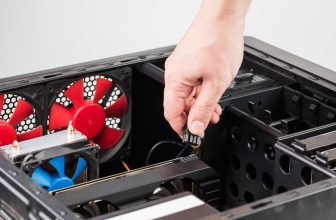
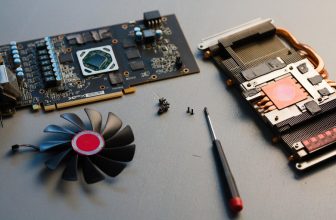
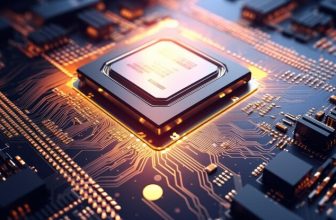
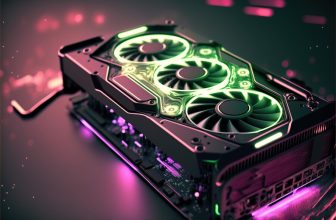

[…] Beyond the Spin: A Deep Dive into GPU Fan Dynamics […]
[…] Beyond the Spin: A Deep Dive into GPU Fan Dynamics […]
[…] gamer and their GPUs boast distinctive needs. Here, we probe into precise thermal technologies tailored to address the […]
[…] energy outlay of a GPU stands in direct sway to the velocity and effectiveness of its fans. Striking a judicious equilibrium […]
[…] Longevity of GPUs: Effective cooling directly corresponds to the lifespan of electronic components. Adaptive GPU fans play an instrumental role […]
[…] GPU Fan A Deep Dive into Dynamics […]
[…] Silent GPU fan engagement brings forth a spectrum of advantages. From an enriched user experience to heightened performance, the benefits are compelling. Users can now revel in the potency of high-performance GPUs without the disruptive noise typically associated with traditional cooling solutions. […]